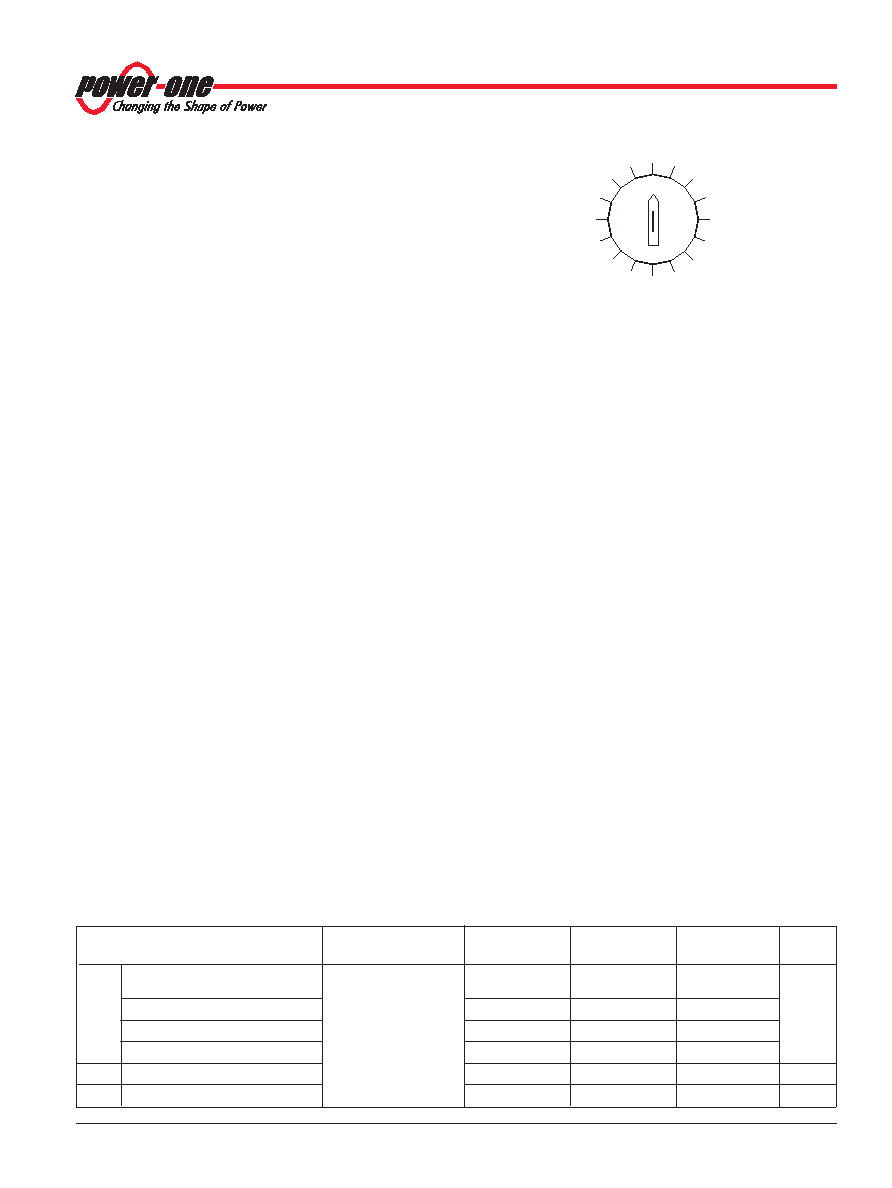- 您現(xiàn)在的位置:買(mǎi)賣(mài)IC網(wǎng) > PDF目錄44979 > LT1740-7Z (POWER-ONE INC) 1-OUTPUT 500 W AC-DC REG PWR SUPPLY MODULE PDF資料下載
參數(shù)資料
| 型號(hào): | LT1740-7Z |
| 廠商: | POWER-ONE INC |
| 元件分類(lèi): | 電源模塊 |
| 英文描述: | 1-OUTPUT 500 W AC-DC REG PWR SUPPLY MODULE |
| 文件頁(yè)數(shù): | 3/32頁(yè) |
| 文件大?。?/td> | 1000K |
| 代理商: | LT1740-7Z |
第1頁(yè)第2頁(yè)當(dāng)前第3頁(yè)第4頁(yè)第5頁(yè)第6頁(yè)第7頁(yè)第8頁(yè)第9頁(yè)第10頁(yè)第11頁(yè)第12頁(yè)第13頁(yè)第14頁(yè)第15頁(yè)第16頁(yè)第17頁(yè)第18頁(yè)第19頁(yè)第20頁(yè)第21頁(yè)第22頁(yè)第23頁(yè)第24頁(yè)第25頁(yè)第26頁(yè)第27頁(yè)第28頁(yè)第29頁(yè)第30頁(yè)第31頁(yè)第32頁(yè)

BCD20023 Rev. AA, 3-Sep-2008
Page 11 of 32
www.power-one.com
T Series Data Sheet
500 Watt AC-DC Converters
Control Features of the Battery Chargers
According to the recommendations of battery manufacturers,
the float-charge voltage of lead-acid batteries should be
temperature-compensated. Depending on the battery type and
size, charging with different temperature coefficients may be
required. An excessive float-charge voltage may damage the
battery through overcharging.
Most
lead-acid
battery
manufacturers
recommend
cell
voltages between 2.23 V and 2.32 V, with the nominal cell
voltage defined at 20 °C and temperature coefficients per cell
between –3 and –4 mV/K.
The value of the negative temperature coefficient is specified
by the type of T temperature sensor.
With the cell voltage selector switch Z, the required cell voltage
can be adjusted at the rear of the converter, making the system
flexible to different float-charge voltages. If the selector switch
Z is not applicable, a cell voltage adjustment can also be
provided by the temperature sensor; see Temperature Sensor
T).
Although it is not recommended, the output voltage can be set
to a fixed value without temperature compensation by an
external voltage source or a resistive voltage divider at the
remote control input, for instance if the battery temperature
shall be controlled by other systems; see External Output
Voltage Control.
Cell Voltage Selector Switch Z
The battery chargers are equipped with the cell voltage
selector switch at the rear side, which provides an easy way of
external adjustment to the required float-charge voltage. Each
switch position allows a step in the output voltage of 10 mV per
cell, whereby the switch position "0" represents a cell voltage
of 2.23 V at 20 °C; position "C" gives 2.35 V per cell.
The cell voltage selector switch fits together with the 2.23 V
temperature sensor. The float-charge voltage is set by the
switch, and the temperature coefficient is specified by the
sensor type.
Caution: Setting the switch to the correct battery cell voltage is
vital for the proper operation of a battery system.
Note: Switching to a different cell voltage while the battery charger
is operating may cause a short distortion of the output voltage.
Potentiometer for Fine Tuning
The
battery
chargers
are
equipped
with
a
one-turn
potentiometer for fine tuning of the output voltage to within
±3.70/00 of Vo. The potentiometer is protected by a plastic
cover. To adjust the output voltage for improved current
sharing or compensation for voltage drops over the load lines,
each battery charger in a system should be unplugged and
adjusted individually to the same output voltage at equal load;
otherwise current sharing may adversely be affected.
External Output Voltage Control
The i/Vcr control input (pin 28) provides two functions:
– External adjustment of the output voltage
– Inhibiting of the converter.
A voltage <0.4 V inhibits the output, a voltage >2.5 V enables it.
With the i/Vcr input in the range of 5.5 V to 11.5 V, the output
voltage Vo set can be adjusted within a range of +3.6% to
–7.9%. This feature is optimized to control the float-charge of a
lead acid batteriy.
Outside of the control range, the sensor monitoring circuit
generates a system error signal (see also System Good).
In the case of a excessively high control voltage, the output
voltage is reduced.
The remote control input is protected against DC overvoltage
up to 60 V.
Note: An open inhibit/Vcr remote control input leads to a sensor
error signal which is indicated by the Error LED at the front and
high impedance of the "System good" signal. The output voltage is
reduced to Vcr fail condition.
2.23 V
2.24 V
2.25 V
2.26 V
2.27 V
2.28 V
2.29 V
2.30 V
2.31 V
2.32 V
2.35 V
0
4
8
C
06068
Fig. 15
Cell voltage selector switch
Table 8: Characteristics of the remote control
Characteristics
Conditions
LT/UT1240
LT1840
LT/UT1740
Unit
typ
Vo
Output voltage at:
Voltage selector switch
25.25
37.85
50.5
V
Vcr fail 2.5 – 5.5 V
Z set at 2.23 V/cell or
Vcr control 5.5 – 11.5 V
without selector switch Z
22.5 + Vcr 0.5
45 + Vcr
Vcr clamp 11.5 – 14 V
selector switch Z
28.25
42.37
56.5
Vcr fail 14 – 60 V
Vi nom, 0.5 Io nom
25.25
37.85
50.5
Rcr
Input impedance
1
M
f cr
Frequency limit
1
Hz
相關(guān)PDF資料 |
PDF描述 |
|---|---|
| LT1241MJ8 | 1 A SWITCHING CONTROLLER, 500 kHz SWITCHING FREQ-MAX, CDIP8 |
| LT1245MJ8 | 1 A SWITCHING CONTROLLER, 500 kHz SWITCHING FREQ-MAX, CDIP8 |
| LT1241CJ8 | 1 A SWITCHING CONTROLLER, 500 kHz SWITCHING FREQ-MAX, CDIP8 |
| LT1242CJ8 | 1 A SWITCHING CONTROLLER, 500 kHz SWITCHING FREQ-MAX, CDIP8 |
| LT1241IN8#TRPBF | SWITCHING CONTROLLER, 500 kHz SWITCHING FREQ-MAX, PDIP8 |
相關(guān)代理商/技術(shù)參數(shù) |
參數(shù)描述 |
|---|---|
| LT1743 | 制造商:未知廠家 制造商全稱(chēng):未知廠家 功能描述:Optoelectronic |
| LT1750 | 制造商:Pulse 功能描述:LAN,E/C,2000V - Bulk |
| LT1754ET | 制造商:Linear Technology 功能描述: |
| LT1761 | 制造商:LINER 制造商全稱(chēng):Linear Technology 功能描述:45V VIN, Micropower, Low Noise, 100mA Low Dropout, Linear Regulator |
| LT1761_1 | 制造商:LINER 制造商全稱(chēng):Linear Technology 功能描述:100mA, Low Noise,LDO Micropower Regulators in SOT-23 |
發(fā)布緊急采購(gòu),3分鐘左右您將得到回復(fù)。